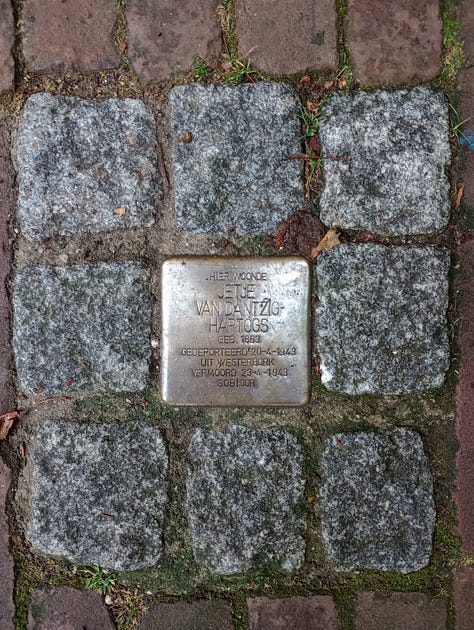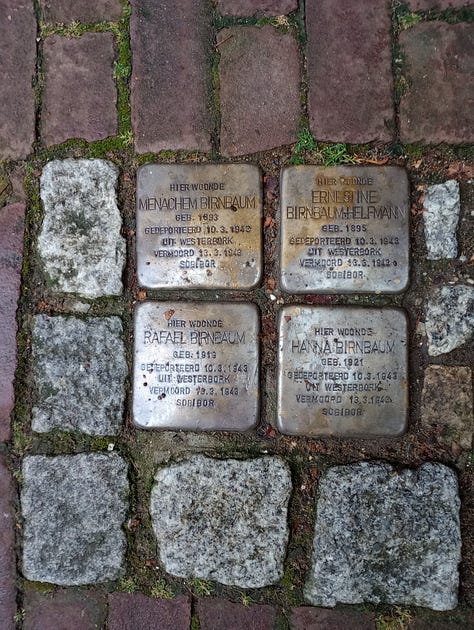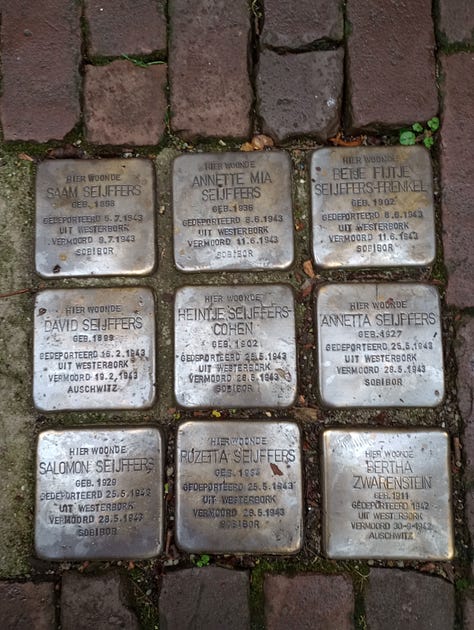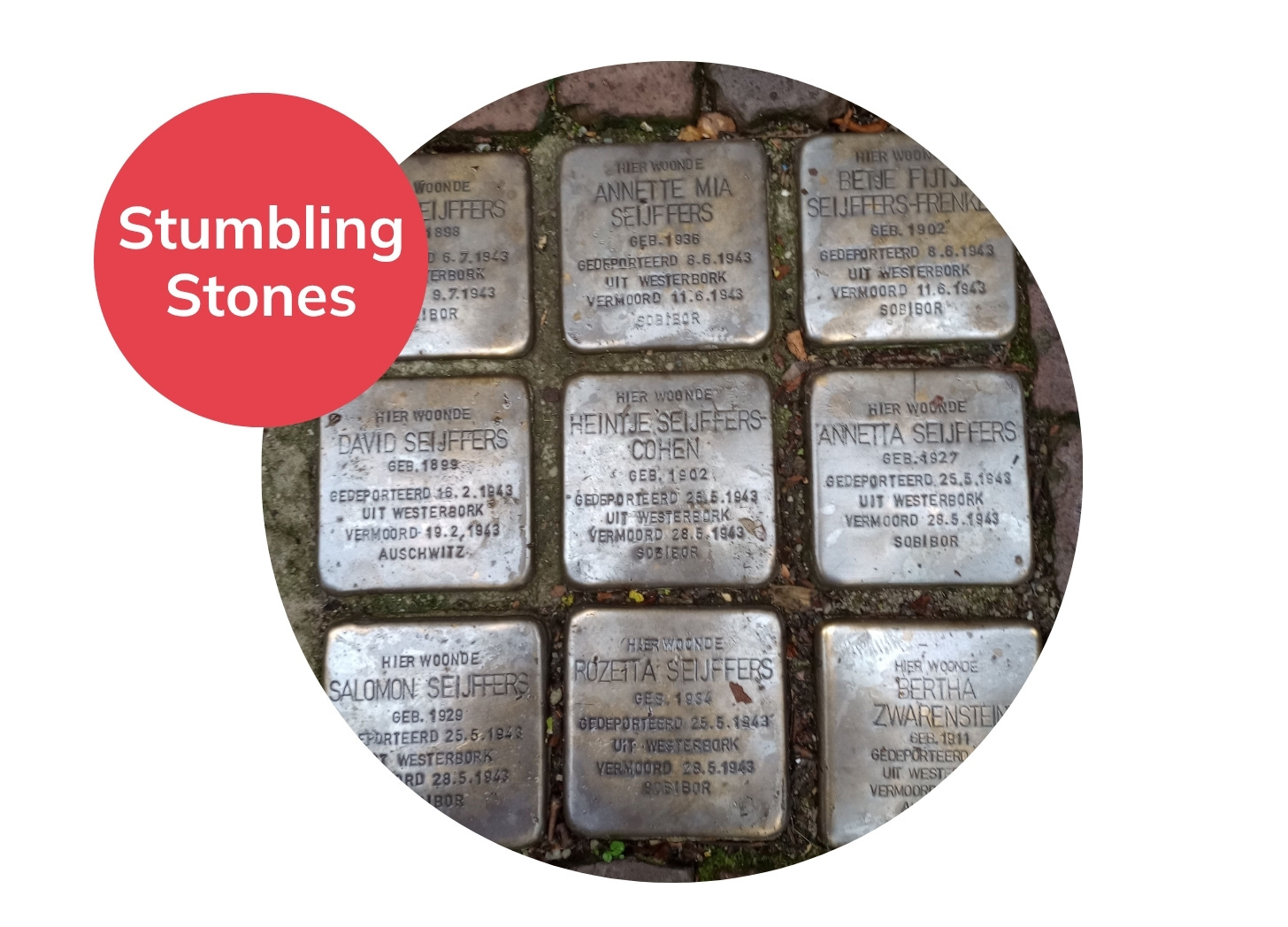The Story of the Stumbling Stones
Cultural Delights
During a visit to the Dutch town of Gouda, I "stumbled" across the world's largest decentralized, open-air art installation.
Stolpersteine (Stumbling Stones) was created by the German artist Gunther Demnig. The art exhibit features copper-colored stones bearing the name of a person killed by the Nazis, their birth date, the date they were taken from their home, as well as the date and place (the name of the concentration camp) of their death.
Each stone is located in front of the house of the person who used to live there. Sometimes, there is just one stone. Sometimes, there are multiple stones representing all of the family members who were deported and killed.
There are more than 100,000 Stolpersteine in 24 countries, with 5,000 in the Netherlands. I saw a documentary about the art piece, and while I was in the country, I planned a trip to Amsterdam to see it.
But before my trip to the capital, I literally stumbled across the stones—just as the artist intended—as I walked down a side street in this quiet town. The street had Stolpersteine embedded in the sidewalk, up and down the block, indicating that many of the families in the neighborhood had been sent to their deaths during World War II.
Even though I knew about the stones and had actually done some research beforehand, I still wasn't prepared for the emotion of unexpectedly seeing them interspersed on the sidewalk.
Even now, I’m still trying to process the lost lives that each stone represents. I think the pieces are so moving because of the juxtaposition of the shiny copper squares representing lives that were brutally taken with the dull cement of a mundane sidewalk. This marker among the pedestrian surroundings is shocking.



Not only do I keep thinking about the people who were killed but also the people who live in the houses now. How do the inhabitants feel seeing the stones outside their doorway every day?
Even though the war was several generations ago, I’m not sure how I would feel knowing that I was living in a home that had been vacated because the original inhabitants had been killed during a genocide.
The Stumbling Stones. Simple yet emotional pieces representing war, art, history, and social commentary in one small square the size of your palm. 🦋
You can find more info about Stumbling Stones here:
Have you ever seen a piece of art that really resonated with you? What about the artwork hit you on a deeper level? Have you ever stumbled across these stones during your travel to Europe?
⭐ More Cultural Delights
Christened “Wander Woman” by National Geographic, Erin Michelson is a professional speaker and author of the Nomad Life™ series of travel books and guides, including the #1-ranked “Explore the World with Nomads.”




I stumbled across one on my last trip to Amsterdam and had the same thoughts.